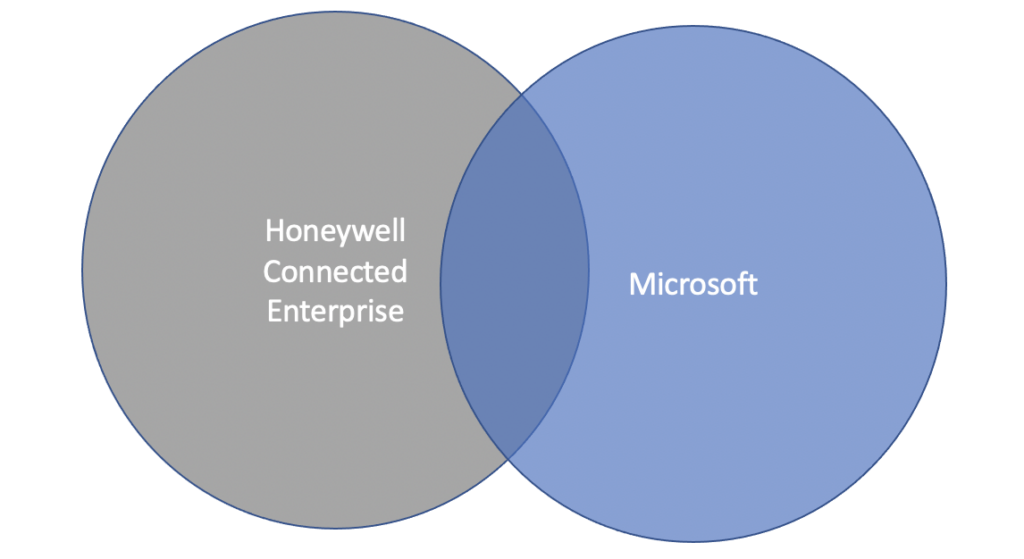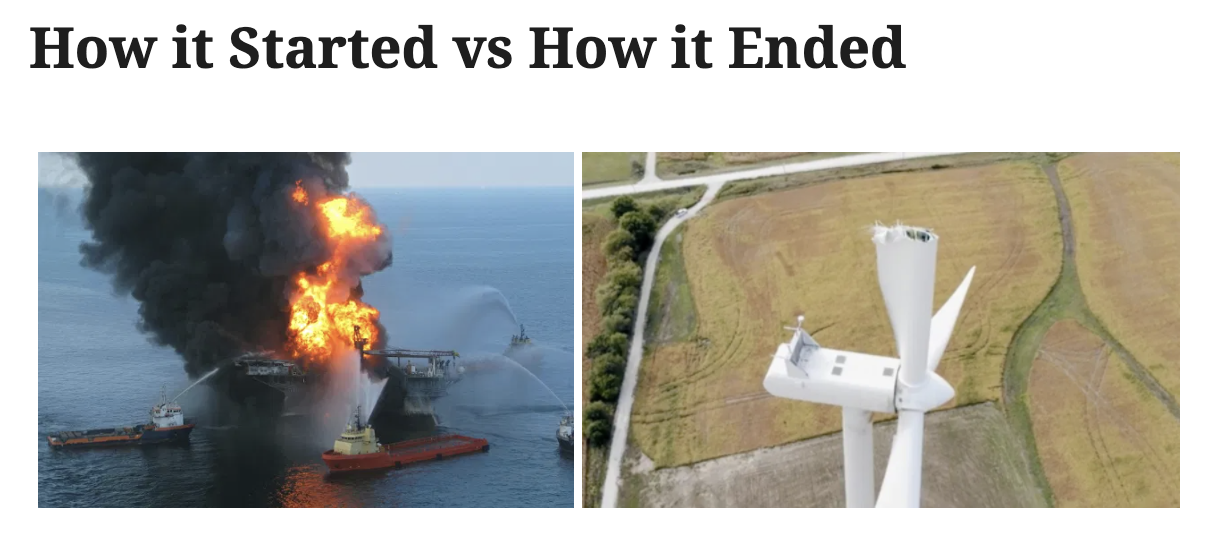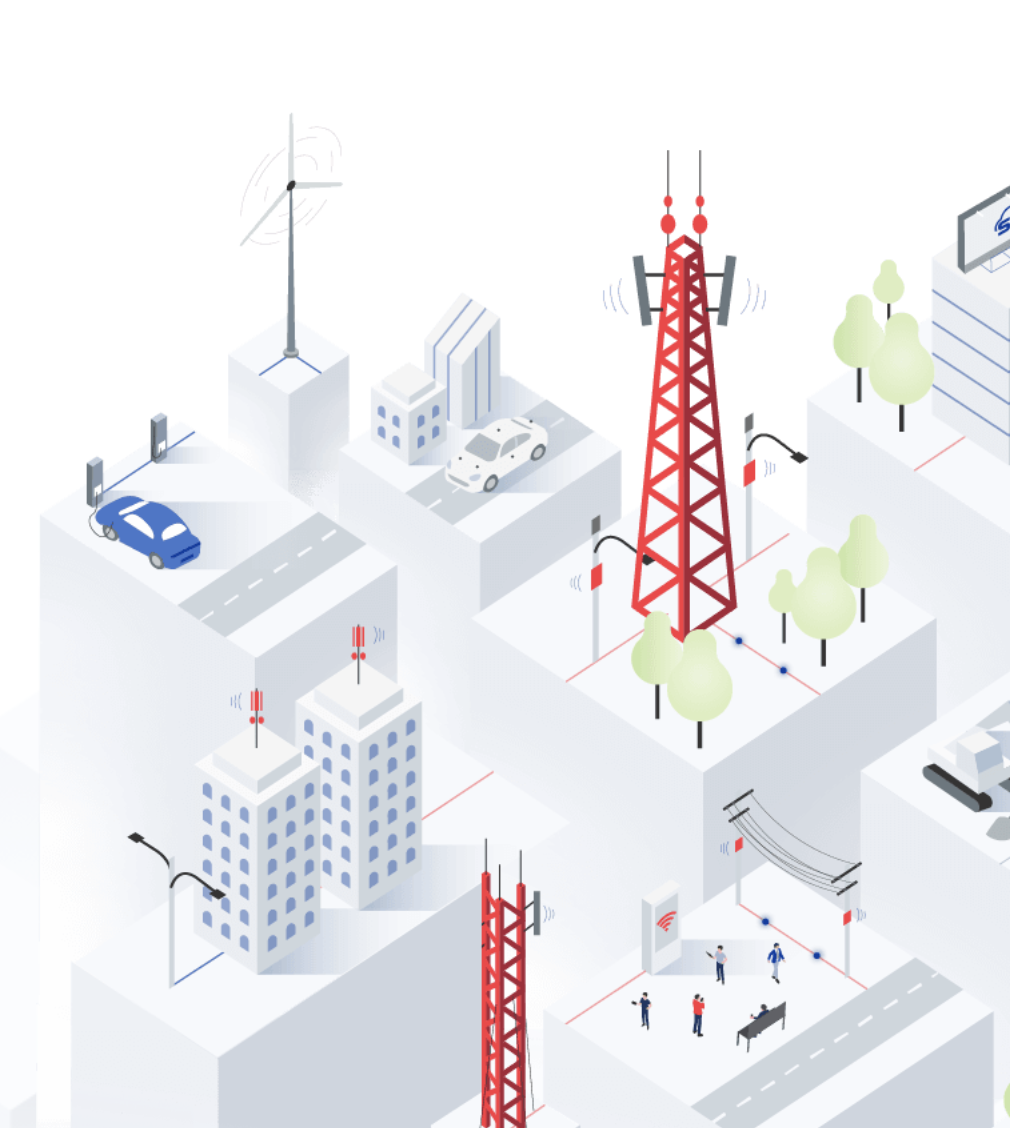
An Energize Theme: Electrify Everything (Guest Post from Tyler Lancaster)
The link can be found here. The original post was written by Tyler Lancaster, a Principal at Energize Ventures.
—
Electrifying Everything: The Key to Decarbonization & A More Sustainable Future
Electrification is a key theme to Energize’s investment thesis. We invest in software and business model innovations, many of which directly contribute solutions towards decarbonization by means of electrification. This is the inaugural post in a blog series where we’ll explore this critical transition and the technologies driving and enabling it.

Addressing climate change is the existential challenge for our generation — and decarbonizing human activity is an essential first step. How do we get there? Put simply: Electrify everything.
Rewiring America argues that to effectively decarbonize (limiting global temperature rise below 1.5°C, consistent with the Paris Agreement), we must electrify…everything, and power those electrons with renewable energy. What does electrifying everything look like? It’s transitioning to fully electric cars, converting home appliances like heating and air conditioning to electric heat pumps, installing efficient LED lights instead of wasteful incandescent bulbs, and even using electricity to create heat for industrial processes. Powering an electrified world with zero-carbon energy means primarily generating electricity with the sun and wind. Electrifying everything is the most important climate imperative of the next 20 years.
As an investor in clean energy technologies, I agree with Rewiring America’s thesis that electrifying everything is the most viable path towards decarbonization. Here’s why:
1. Renewable power is the only carbon-free, cost-effective solution readily available at scale today.
Solar and wind are highly efficient electricity production technologies that represent the largest potential energy sources available on earth. The entire human population consumes approximately 19 terawatts (TW) of energy today. The global solar resource available is 85,000 TW, or 4,500 times the current energy demand. Wind is a 3,600-TW resource, or 190 times demand. As a population, we can afford to both consume much more energy and be incredibly selective about where we put solar panels (rooftops, parking lots, deserts) and wind farms (pastures, fields), while still comfortably covering our energy needs.

Not only are these renewable resources readily available, they’re also cost-effective. Solar and wind are now cheaper than coal, natural gas and nuclear almost everywhere. Lazard’s 2020 Levelized Cost of Energy (LCOE) update estimates in many cases, even unsubsidized solar and wind are less expensive than the marginal cost of operating existing conventional generation. Yes, that means it is cheaper to build new solar and wind systems than to continue operating fossil fuel power plants. Renewable energy’s economic lead will only grow with further innovation and scale.

Attaining a 90+ percent clean energy power grid powered primarily with wind and solar is achievable in the next 15 years if we move quickly. Energy Innovation and Policy, an excellent nonpartisan energy and environmental policy firm, recently published the 2035 Report outlining a cost-effective pathway to 90 percent decarbonized grid by 2035. I will caveat that energy storage and flexible zero-carbon generation (hydro, geothermal and nuclear) become even more valuable — and essential — for a 90+ percent clean energy grid with increasingly large amounts of variable wind and solar. If you are interested in the tradeoff of going “all in” on solar and wind, I would encourage you to read the work of Jesse Jenkins, who has conducted extensive research on an optimized and decarbonized energy system.
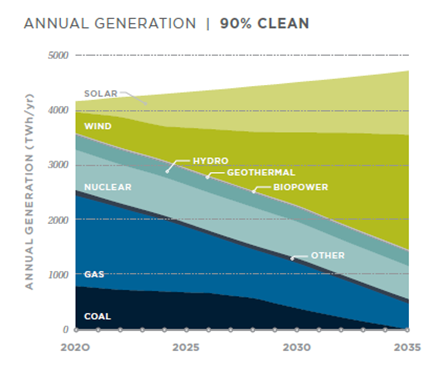
What about alternatives like carbon capture, advanced nuclear, and green hydrogen? In our experience, these energy resources are not technically feasible or economic at scale today. The clean energy sector is experiencing rapid innovation, and new tools to aid the fight against climate change are emerging every day. We’re excited to add these technologies to the mix when the time is right — but wind and solar are ready to go now.
2. Electrifying everything will create a massive renewable energy economic boom.
Rewiring America estimates that electrifying everything would increase U.S. electricity demand by 3 to 4 times, from 450 GW to 1.5 to 1.8 TW. A mostly electric energy system would necessitate a massive investment in renewable generation, storage, high capacity power lines, and demand-side flexibility. As we electrify the U.S., we need to rapidly scale up investment in renewables to the tune of 1,200+ GW in new wind and solar capacity, injecting $1.7T of investment into the power grid.
The benefits of solar and wind extend beyond the direct investment. Solar and wind reduce local pollution, create jobs, generate revenue for municipalities and landowners, improve public health, increase home values, and preserve the natural landscape. Energy Innovation and Policy estimates a 90% clean power grid would support a total of 29 million job-years cumulatively from 2020 to 2035. Electrifying everything and thereby increasing electricity demand by three to four times would further multiply employment related to decarbonization efforts. The U.S. can employ a generation of workers by powering our economy with renewable electrons.
Clean energy entrepreneur Jigar Shah has argued for years that addressing climate change is the single greatest wealth creation opportunity of our lifetime, to the tune of a $10 trillion economic impact. We agree, and a growing body of interdisciplinary research is forming a clear pathway to unlocking climate wealth in the U.S. by electrifying everything — and powering everything with renewable energy.
3. There is incredible inertia in carbon-based energy consumption systems, and we must start NOW.
Shayle Kann, Managing Director at Energy Impact Partners, recently tweeted a simple framework to focus decarbonization efforts. Eighty-six percent of global greenhouse gas emissions come from five sectors: electricity and heat (25%), agriculture and land use (23%), industry (18%), transportation (14%), and buildings (6%). Decarbonize each quickly, and we are well-positioned to limit global temperature rise below 1.5°C. The problem? Today’s equipment base is heavily committed to future emissions. We need to act now by electrifying quickly.
A furnace lasts 18 years. A car or truck? 20 years. How about a power plant? 50 years. Every time we build or continue to operate a fossil fuel-consuming machine, we are creating “committed emissions” for the entire lifetime of that machine. Energy consumption systems face remarkable inertia from replacement cycles, even with exponential adoption of new technology. If we do not rapidly achieve 100% adoption of electric, renewable, zero-emission machines sooner than later, we cannot prevent global temperatures from charging past 1.5 degrees Celsius.
Let’s use electric vehicles (EVs) as a thought experiment. To keep things simple, we’ll assume that EV adoption as a percent of all annual vehicle sales will reach 100 percent by 2030 — much faster than even aggressive forecasts by Bloomberg New Energy Finance. To provide another baseline, we’ll use the data point that in 2018, there were approximately one million EVs in the U.S. market, making up 0.4 percent of all vehicles on the road. In our scenario, when we reach the incredible milestone in 2030 of making every new vehicle sold an EV, cumulative EV adoption would still be just 35 percent. Why? On average, vehicles are replaced once every 20 years (the average vehicle in the U.S. is now 12 years old). We currently have about 280 million gas-burning vehicles on the road. Even after achieving 100% annual EV adoption in 2030, 193 million fossil fuel combustion vehicles would remain on the road.
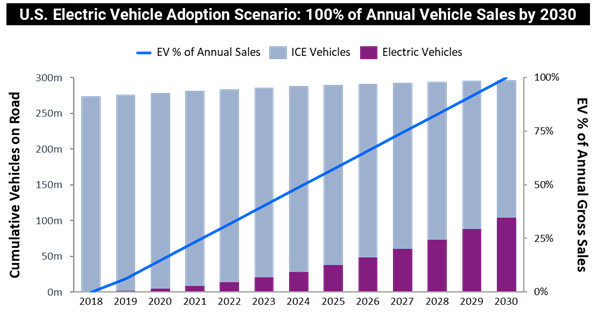
We have a long journey ahead to fully electrify and decarbonize the machines and equipment that make the modern economy hum. However, I am optimistic sustained market and technology tailwinds behind electric machines and renewable energy will catalyze exponential adoption. Acting now is pivotal to combat the inertia in our energy-consumption systems, from power to transportation, buildings and beyond.
What does “electrifying everything” entail for the energy and industrial start-up ecosystem?
I expect in the next 20 years, most new machines, equipment and appliances will be electric. Increasingly, electricity will be zero-carbon and renewable. Massive growth tailwinds in the U.S. and abroad will create a new class of climate unicorns, generating venture-scale returns for entrepreneurs and investors. Solutions that are technically viable, economic, and simply a better product and customer experience will capture disproportionate market share.
At Energize, we believe the following solutions are best poised to capitalize in the 2020’s:

Energize will continue its focus on asset-lite, software-enabled firms. We believe a multibillion enterprise value software company will be built in each of these categories in the next 20 years.
We are bullish on all nine of the above solutions to decarbonize by electrifying (everything). The ensuing blog series will dive deeper into how we believe software and business model innovation will accelerate each. In my next post, I’ll dig further into solar software…stay tuned!


